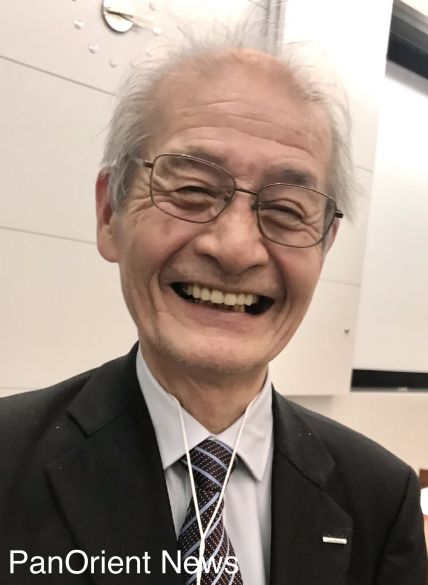|
|
Op-Ed
A Story With a Happy Ending
Tuesday, October 15, 2019
 Akira Yoshino
Akira Yoshino
By Roger Schreffler
Special to PanOrient News
Providence, RI- (USA) Nine years ago, I met a Japanese research executive who, I learned during our meeting, invented how to manufacture lithium-ion batteries. His name: Akira Yoshino.
On Oct. 9, Yoshino and two other battery industry titans were awarded the Nobel Prize for Chemistry.
By his own admission, Yoshino never envisioned a world in which we depended on notebook computers and cell phones. Electric cars were completely out of the question. His company’s original focus, once the technology was ready to go to market in the early 1990s, was on camcorders.
Note that Yoshino’s research team, working out of a small research lab in Kawasaki, filed their first big patent in 1983.
“At the time,” he explained, “researchers working with metallic lithium were faced with an array of problems, the most serious being that the material is unstable and prone to overheating and fire.”
Yoshino found a way to eliminate that.
A battery expert in the U.S. said that Yoshino and his team at Asahi Kasei Corp., a global chemical company and battery materials supplier, "put together the fundamental structure that we see in today's lithium-ion batteries. Every lithium-ion cell in portable electronic devices on the market - computers, phones, power tools and cameras - derives from Yoshino's research.
How big a business? Since 1995, global manufacturers have sold more than 5 billion personal computers, an estimated 12 billion smart phones, and more than 2 million electric cars; in the case of cars, more than 2 million annually.
By 2030, most analysts expect lithium battery-powered car sales to grow to more than 10 million, some say 15 million. And all using Yoshino's “fundamental structure.”
And battery production is projected to grow to 1.5 terawatt-hours (that is 1.5 trillion watt-hours) in 2030, mostly for the auto industry. That compares to 19 gigawatt-hours (19 million watt-hours) in 2010, the year that Nissan Motor Co. began mass-producing the Leaf, the world's best-selling battery-powered car.
Yoshino's co-laureates were M. Stanley Wittingham and John Goodenough who, along with Rachid Yazami (who wasn't among the winners), did their pioneering research into intercalation and rechargeable properties of graphite at Exxon Research & Engineering Co., Bell Laboratories and the Institute National Polytechnique de Grenoble.
Roger Schreffler, technology writer and PanOrient contributor
© PanOrient News All Rights Reserved.
|
|